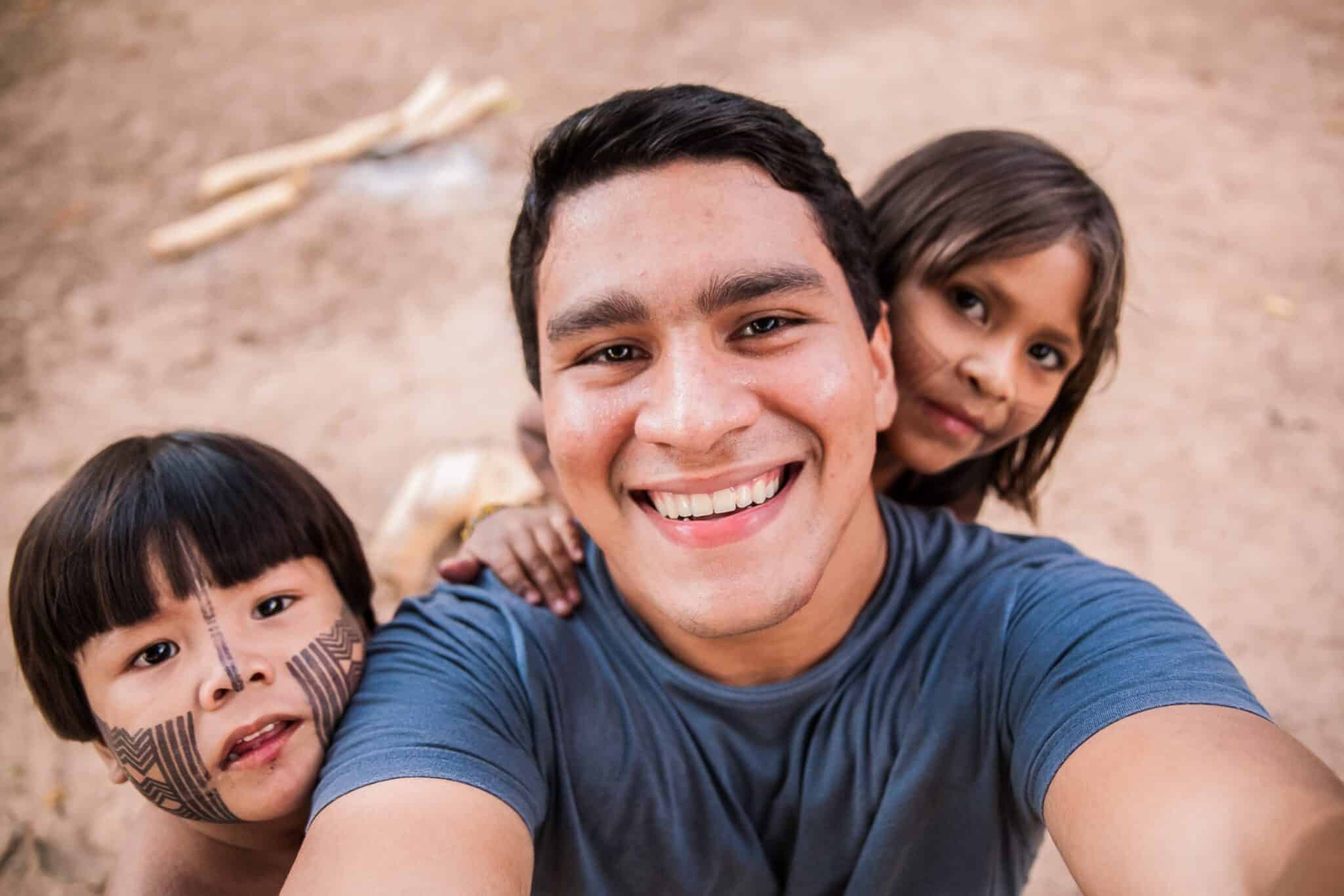- How To Learn From Melanie Joy’s Enlightening Concept of Carnism To Improve the World - June 24, 2024
- Unwrap Compassion: Unique Gifts for Vegans That Inspire and Delight - December 11, 2023
- Enjoy The Delightful Plant People Boutique: Beautiful Plants and Lovely Snacks - November 20, 2023
Compassionate tourism is travel designed with concern for people, animals, and land. When you explore lovely destinations, do your best to have a positive impact. I’ll show you how.
What Does Compassionate Tourism Look Like?
Compassionate tourism is a complex concept and there is no one definition. Compassionate travel can look like:
- Caring for animals in your travels.
- Going to a destination to volunteer.
- Traveling to promote compassion.
I’ll review these different ways to combine travel with compassion.
Compassionate Tourism: Caring for Animals
The most frequent definition of compassionate tourism is trips where animals are treated compassionately. My experience with compassionate travel is through vegan tourism, where I go to tourist destinations focusing on compassion for animals.
Animals as Food
The biggest way travelers exploit animals is by eating them. For people who regularly eat meat and dairy products, a new destination is an invitation to try novel cuisines. And the national dishes for popular tourist destinations are almost all meat-based, as shown by this list:
- Italy: Ragu alla Bolognese
- France: Beef Bourguignon
- England: Fish and Chips
- Germany: Sauerbraten
- Sweden: Swedish Meatballs
- Australia: Meat Pie
- Mexico: Tacos
- United States: Hamburgers and Hot Dogs
- Korea: Beef Bulgogi
- Turkey: Meat Kebabs
- China: Peking duck
 With over 900 million international arrivals annually, tourism produces a remarkable amount of cruelty. All these dishes can be made without meat and other animal products, so one way to be compassionate is to seek vegan options in areas you visit. The Happy Cow app provides options by location worldwide.
With over 900 million international arrivals annually, tourism produces a remarkable amount of cruelty. All these dishes can be made without meat and other animal products, so one way to be compassionate is to seek vegan options in areas you visit. The Happy Cow app provides options by location worldwide.
A vegan diet is the single most impactful action an individual can take to fight climate change. And for people who are not vegan, reducing your meat consumption can still make a difference.
If you’d like to know why everyone should reduce their meat and dairy consumption, read Why You Should Celebrate World Vegan Day Even if You Eat Meat.
Animals as Entertainment
Now let’s explore the many ways we use animals for entertainment.
“Animals are used in a variety of different ways to provide human entertainment. The use of animals in entertainment creates serious issues both in terms of the welfare of the individual animal as well as species conservation in some cases. The entertainment industry covers an enormous range of uses of animals. In fact, this is probably the most diverse area of animal abuse. It is probably also the least ‘justifiable’. There are welfare problems in most cases, and the most extreme forms of ‘entertainment’ cause immense suffering and many animal deaths.” ~ World Animal Net

Tourist options include circuses, bullfighting, and rodeos. Horse, camel, and greyhound racing are options for those who like to gamble. There are even places you can pay to hunt animals kept in enclosures.
Because of the work of animal activists, things are changing. For example, the Ringling Brothers Circus shut down in 2017. But in 2023, they returned and are not using animals in their shows. Instead, humans are the main attraction in the big top. Another circus uses a creative approach to incorporating animals—animal holograms entertain guests.
I love animals and enjoy seeing them on my trips. So what constitutes an ethical animal experience?
“Is all Animal Tourism bad? No. Animal tourism has good and bad to it, and it’s important to get educated and only partake in good animal tourism. Animal tourist places that take animals from their natural habitats for entertainment or unethical animal encounters should be avoided at all costs. However, visiting an elephant orphanage, like the Sheldrick Wildlife Trust in Kenya, that does not partake in elephant rides and releases the healed elephants back to the wild when able to, is acceptable. This type of elephant sanctuary has a positive impact on its community and animals.” Pamela Drager
Animals as Transport
 Another way animals are used in tourism is through transporting tourists. You’ve probably seen horse-drawn carriages in places like New York City’s Central Park. Many animal activists protest the use of animals for transportation. As a result, one town now uses electric carriages instead.
Another way animals are used in tourism is through transporting tourists. You’ve probably seen horse-drawn carriages in places like New York City’s Central Park. Many animal activists protest the use of animals for transportation. As a result, one town now uses electric carriages instead.
During my visit to Santorini, Greece, I saw donkeys hauling tourists up and down a steep mountain. But I also spotted animal advocacy posters with initiatives to eliminate this cruel practice.
Compassionate Tourism: Volunteering
Have you ever considered combining travel and volunteering? Put these together, and you can explore new places, meet people, and make a difference.
When you volunteer, you meet locals and work side by side, learning about their communities and how they envision their future. You can develop skills or use your best talents depending on the volunteer opportunity.
In addition, traveling and volunteering can help you to make a difference. You are giving back to the community and helping to make a positive impact on the lives of others.
Here are some tips for planning a travel and volunteering trip:
- Choose your favorite destination and match that to volunteer opportunities that interest you.
- Do your research and find a reputable volunteer organization.
- Africa: Go Volunteer Africa
- Asia: Volunteering Solutions
- Central America: International Volunteer HQ
- South America: International Volunteer HQ
- When you find your opportunity, research the area, language, and culture.
Another chance to combine travel and volunteering is to help in a locale that needs extra assistance. For example, Knoxville restauranteur and owner of Yassin’s Falafel House Yassin Terou routinely takes his mobile kitchen to places experiencing disasters. He supports volunteers and survivors by providing food. After Turkey’s terrible earthquake, he raised $188,000 and volunteered on the ground to aid the survivors.
Want an unforgettable travel experience? Volunteer.
Compassionate Tourism: Promoting Compassion
Traveling can also be a way to promote compassion and make a difference in the world. What do you get from these types of learning experiences?
When you travel, you are exposed to new cultures and perspectives. You meet people from different backgrounds and learn about their experiences. This can help you better understand the world and its people and make you more compassionate.
Immersion in another culture allows you to make deeper connections. You can better understand how we are more similar than different. Learn strategies for connecting with others without bias.
You can make a difference for your destination and when you arrive home. Tell others about the people you met and the things you learned. This helps raise awareness of the challenges people face in developing countries, and it can inspire others to travel and promote compassion.
There are many ways to travel to promote compassion. Here are a few ideas:
Tourism For Peace brings people from different countries together to learn about diverse cultures and ecosystems.
“We use this traveling/tourism theme as a way to see our differences in a new light – as “brothers and sisters” from another land or area. You may come to our programs as either a host or guest, or both! Peacemaking principles are taught and expressed in fun & enlightening activities, meditations, workshops, classes, performances and community service projects. All people are citizens of earth – learn to love others.”
Children’s International Summer Village (CISV) provides 11-year-old children with opportunities to learn about other cultures and promote peace. In the flagship villages, delegations from many countries come together for a 4-week camp. Through games, activities, and excursions, they learn that “we all smile in the same language.”
Children who attend this camp see it as a life-changing experience.
Compassionate travel is traveling with a purpose– to learn about and connect with other cultures, to help all beings, and to make the world a better place.
READ NEXT
My Journey of Compassion For All Beings
Join our Blount County Vegan Facebook Community
Blount County Restaurants with Vegan Options
How To Become Aware of and Stop Animal Exploitation Now
Who Moved My Cheese? How To Travel With Compassion
How To Unpack Your Privilege Before You Pack Your Bags: Travel Lessons
This post appeared originally at Life At The Intersection.




